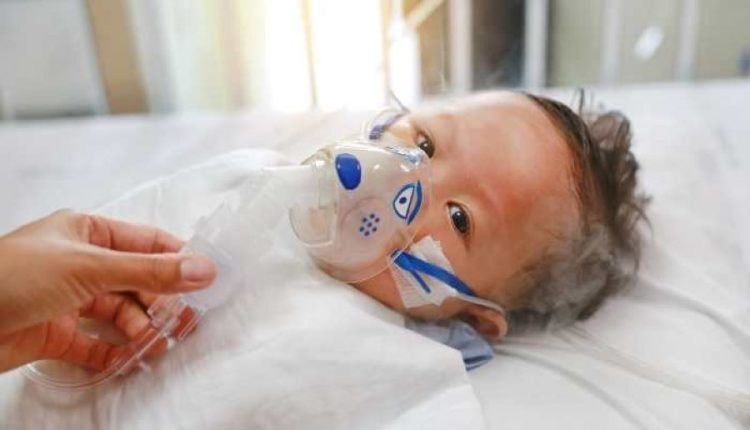
RSV (респиратордук синцитиалдык вирус) толкуну балдардын аба жолдорун туура башкаруу үчүн эскертүү катары кызмат кылат
2022-жылдын күзүнө чейин, көпчүлүк балдар 2 жашка чейин ооруга чалдыкса, ал тургай чоңдор да бул ооруга чалдыкса да, респиратордук синцитиалдык вирус (RSV) жөнүндө көп ойлонушчу эмес.
But a remarkable surge of RSV cases, coupled with a heavy flu season and ongoing COVID-19 infections, is creating a trifecta of respiratory diseases that is wreaking havoc and pushing hospitals to the limit, and EMTs are seeing an uptick in calls concerning those facing serious symptoms.
While its symptoms are often mild and cold-like, RSV is especially dangerous to newborns, infants under 4 months, children with weakened immune systems or lung diseases, and adults over 65, who frequently have coexisting conditions.
RSV symptoms
RSV, specifically, causes an infection in the lungs and breathing passages, and unlike influenza, it mainly affects these areas.
As such, most symptoms are cold-like, such as runny nose, coughing and sneezing.
That all sounds low-key and manageable, but more severe cases may present with fever, wheezing, rapid or difficult breathing, and a bluish hue to the skin because of a lack of oxygen.
Infants may display all these symptoms, along with a pronounced struggle to breath, lethargy, irritability and poor feeding.
In worst-case scenarios, particularly among young children, RSV can lead to other serious lung conditions, including pneumonia (infection of the lungs) or bronchiolitis (infection of the small airways in the lungs).
When these conditions are exacerbated, there can be fluid in the lungs, excess secretions being coughed up or obstructing the airway, and a lack of oxygen from difficult breathing.
At this point, emergency treatment may be necessary for airways and the lungs.
Airway management in children
Pediatric patients — and geriatric patients, for that matter — have more delicate airways than a healthy adult in their prime.
Along with the obvious fact that young patients have more narrow airways, it all increases the potential complications from emergency airway management, particularly the suctioning required before intubation or providing oxygen.
These complications include trauma, cardiac arrhythmias and hypoxemia (low level of oxygen in the blood).
These complications can go beyond medical issues.
Children often have less control of their emotions than adults.
They may overreact to invasive treatments, such as tracheal suctioning, out of fear and азап.
And considering very young children won’t be able to communicate their fears verbally, it creates a difficult situation.
To help mitigate the emotions, use these tips:
- Wait to suction until a caregiver is present, if possible. Communicate with the caregiver — they’ll be your ally in getting the child to trust you.
- Explain the procedure to the child in age-appropriate language.
- Ask the child if they are ready to be suctioned.
- Be gentle and kind in language and manner.
If the child continues to deny the suction, explain it is for their well-being and will end quickly.
Praise the child afterward — no matter how they behaved.
When it comes to the actual procedure, suctioning children, especially newborns, has specific considerations to keep in mind.
Choose the proper catheter.
Children require smaller tips, and potentially a soft French tip for infants and newborns to decrease the risk of trauma.
Reduce suctioning power from what you might use with a healthy adult.
Never suction longer than 10 seconds.
The child should be supine during the suctioning, but you may have to pad the shoulders to keep the head in neutral alignment to prevent flexing of the моюн.
Hyperoxygenate before beginning suctioning to reduce risk of hypoxemia.
БАЛАНЫН ДЕН СООЛУГУ: МЕДИЧАЙЛД ЖӨНҮНДӨ КӨБҮРӨӨК БИЛИҢИЗ ЭКСПО КОМПАНИЯСЫНЫН БУТКАСЫНДА
The RSV surge is highlighting the dangers of respiratory diseases for young children
The right technique and жабдуулар can prevent a serious situation from devolving into something graver.
Therefore, first responders must have a variety of child-sized respiratory equipment on hand, including catheters and tubing for suction machines.
Portable suction is equally important, since it allows the first responder to go to the child rather than attempting to move a child who is already in distress.
Оку: Ошондой эле
Кошумча кычкылтек: АКШда цилиндрлер жана желдетүү колдору
Негизги аба жолдорун баалоо: Обзор
Дем алуу кыйынчылыгы: Жаңы төрөлгөн ымыркайларда дем алуу кыйынчылыгынын белгилери кандай?
EDU: багытка Tip соргуч, заараны чыгаруу
Тез жардам үчүн соргуч бирдиги, Кыскача чечим: Spencer JET
Жол кырсыгынан кийин аба жолдорун башкаруу: Обзор
Вентилятордогу бейтаптарыңыздын коопсуздугун сактоо үчүн күнүмдүк үч практика
Тез жардам: шашылыш аспиратор деген эмне жана аны качан колдонуу керек?
Седация учурунда бейтаптарды соруунун максаты
Кычкылтек терапиясы үчүн мурун каннуласы: бул эмне, кантип жасалат, аны качан колдонуу керек
Кычкылтек терапиясы үчүн мурундун зонд: бул эмне, ал кантип жасалган, аны качан колдонуу керек
Кычкылтек редуктору: иштөө принциби, колдонуу
Медициналык соргуч аппаратты кантип тандоо керек?
Холтер Монитор: Ал кантип иштейт жана качан керек?
Пациенттин басымын башкаруу деген эмне? Обзор
Head Up Tilt Test, Vagal Syncope себептерин изилдеген тест кантип иштейт
Жүрөк Syncope: Бул эмне, ал кантип диагноз жана кимге таасир этет
Кардиак Холтер, 24 сааттык электрокардиограмманын мүнөздөмөсү
Респиратордук синцитиалдык вирус (RSV): Балдарыбызды кантип коргойбуз
Респиратордук синцитиалдык вирус (RSV), ата-энелер үчүн 5 кеңеш
Неонаталдык респиратордук дистресс: эске алынуучу факторлор
Кош бойлуулук учурундагы Стресс жана Стресс: Энени жана баланы кантип коргоо керек
Дем алуу кыйынчылыгы: Жаңы төрөлгөн ымыркайларда дем алуу кыйынчылыгынын белгилери кандай?
Респиратордук дистресс синдрому (ARDS): терапия, механикалык желдетүү, мониторинг
Бронхиолит: симптомдору, диагностикасы, дарылоо
Балдардын көкүрөк оорусу: аны кантип баалоо керек, эмнеден улам пайда болот
Бронхоскопия: Ambu бир жолу колдонулуучу эндоскоп үчүн жаңы стандарттарды койду
Педиатрия курагындагы бронхиолит: респиратордук синцитиалдык вирус (RSV)
Респиратордук синцитиалдык вирус (RSV), АКШнын ооруканаларына жаткырылган балдар



